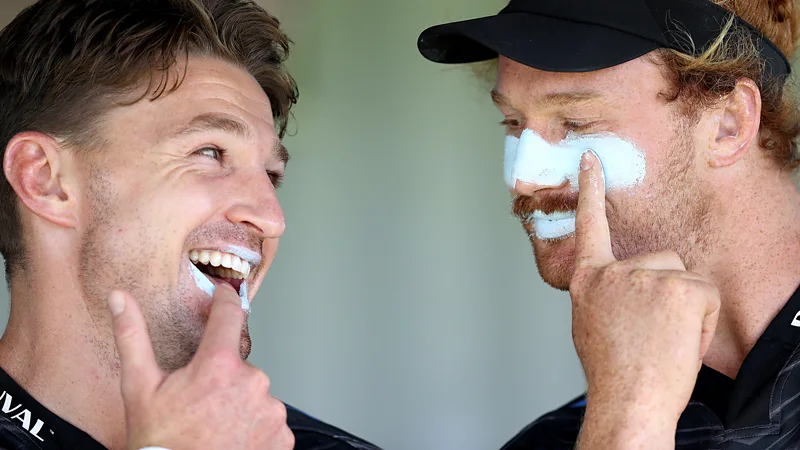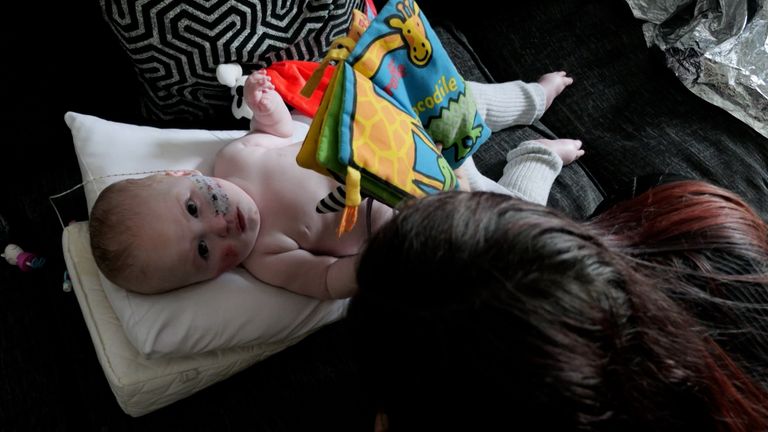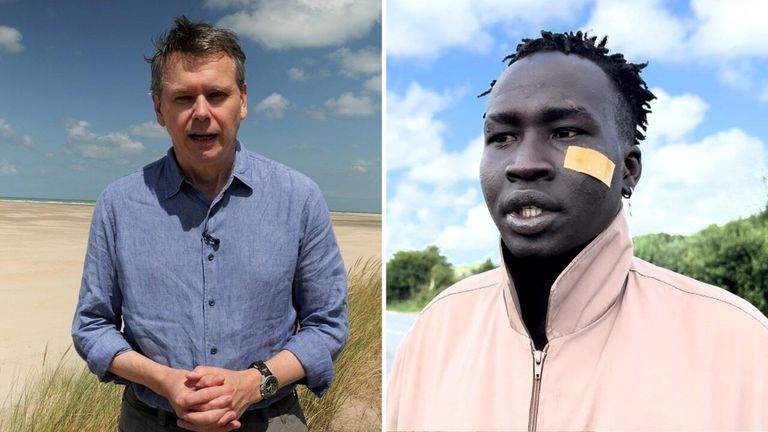Sunscreen: Are you using it correctly?
The sun's rays are carcinogenic – here's how to protect yourself properly, according to experts.

Wearing sunscreen is widely acknowledged as being one of the best things we can do for our health. More than 80% of melanoma skin cancer cases are caused by sunburn – and this number is rising year on year. There are an estimated 1.5 million new cases of skin cancer globally each year, with this figure expected to rise by 50% by 2040.
Despite these stark facts and repeated public health warnings about the risks of sun exposure, there's a lot of confusion around how, and when, to apply sunscreen.
Why do we need to protect our skin from the sun?
When we're exposed to the sun, UV radiation damages the DNA, proteins and other molecules found within our skin cells, says Richard Gallo, professor of medicine at University of California.
In moderate amounts, exposure to UV radiation from sunlight helps our skin cells to generate vitamin D. But as we expose our skin to more sunlight, it tries to protect itself by tanning through the production of melanin, Gallo says. "If the exposure is too high, the skin can't protect itself and you get a burn," he says.
This can lead to DNA damage in our cells, which can cause premature ageing, and can increase the risk of developing skin cancer, Gallo says.
Exposure to UV radiation is the main cause of the most common forms of skin cancer.
"Low SPF sunscreen slightly reduces radiation exposure from the sun," Gallo says, but "in most cases, this allows all of the harmful effects to still occur. Radiation from the Sun is a potential carcinogen, at even low doses."
What is SPF, and how much do I need?
SPF stands for "sun protection factor", and the number attached to it on bottles of sunscreen indicates how much UV radiation from the Sun is required before it becomes ineffective. The higher the SPF, therefore, the more protected your skin is. However, the SPF only indicates the level of protection from UVB rays – the amount of UVA protection is specified via a separate rating (more on this later).
The amount of UV radiation we're exposed to changes throughout the day – as the Sun's rays get stronger, we're exposed to more solar energy. The Sun's rays are at their strongest between 10am and 4pm.
What's the best way to apply sunscreen?
One 2018 study found that after sunscreen is applied, some UV protection kicks in immediately – though it takes around 10 minutes for this to become stable. However, experts usually recommend that people apply sunscreen 20-30 minutes before sun exposure to allow time for it to absorb into the skin. It might be wise to apply it twice, since studies show that most people tend to underapply sunscreen.
In one study, researchers asked 31 participants to apply sunscreen in a lab under black light, and found that applying it twice reduced the surface area of skin that they missed the first time around.
Scientists also advise reapplying sunscreen after sweating, being immersed in water, or if our skin has rubbed up against clothing or sand.
It's also important to not mix sunscreen with other skin products, such as moisturiser, says Richard Blackburn, professor of sustainable materials at the University of Leeds' school of design. This is because many sunscreens that contain metal nanoparticles like zinc oxide may be less effective because of how these ingredients react with other ingredients.
Sunscreen becomes less effective over time, experts say, but generally, it should work for up to three years from the date you purchase it
But this doesn't mean we shouldn't use sunscreen, Blackburn says. "The most important message is to use sunscreen every day from April to September," he says.
Most formulations available in the UK, for example, are reliable when worn on their own, Blackburn says, but he advises against mixing different brands of sunscreen, or mixing a sunscreen with other skin products, in case some of their ingredients are incompatible with each other.
Is sunscreen different in the US compared to the UK?
There are some differences between sunscreens sold in the UK and the US, partly because of contrasts in how they're categorised. In the US, sunscreens are treated as non-prescription drugs, so every ingredient has to go through a long regulatory process, which means new sunscreen filters can take a long time to be approved. In the EU, sunscreens are regulated as cosmetics.
As a result of this longer process to approve new, potentially more effective UV filters, researchers have found that some US sunscreens fail to meet the European Union's higher UVA protection standards.
Can I get sunburned through glass?
Glass filters the most dangerous radiation from the sun (UVB rays), says Gallo, but it still lets in radiation that causes a low level of damage. Repeated exposures to the sun, even through a glass window, will damage the skin. Exposure to UVA, which is thought to be responsible for 90% of visible changes to the skin as we age, can still occur through glass. (Read about how aging skin affects our health in this article by Zaria Gorvett.)
Does sunscreen expire?
Sunscreen becomes less effective over time, experts say, but generally, it should work for up to three years from the date you purchase it. Most sunscreen bottles in the UK will have a jar symbol indicating how many months the product will last for once opened. The Food and Drug Administration (FDA) in the US requires all sunscreen products to have a shelf-life after purchase of at least three years unless it carries an expiration date and provided it hasn't been stored in direct sunlight or excessive heat.
It's also recommended that you check the sunscreen for any obvious changes in consistency and colour if you're not sure. Keeping the bottle out of direct sunlight or in hot environments, like the car helps to avoid speeding up how quickly the ingredients break down.
Does sunscreen block vitamin D production?
Vitamin D plays an important role in the absorption of calcium to help maintain strong bones, and maintain our immune systems. There have been some concerns that wearing sunscreen can block vitamin D absorption, but a review of studies concluded that, on balance, the risk of sunscreen affecting how much vitamin D we absorb is low.
Does sunscreen contain toxins?
There have been some concerns that sunscreens contain ingredients that can build up in our bodies and cause harm. The evidence suggests that the ingredients used in UK, EU or US-approved suncreams are safe and effective, and any potential harm is outweighed by their benefits in protecting people from UV radiation. (Read more from BBC Future about what science says about the safety of ingredients in suncream.)
The biggest concern with sunscreens is if you are sensitive or allergic to any of a specific sunscreen's ingredients, says Gallo, as this can cause a rash.
"The myths about toxins in sunscreens are a sensational exaggeration and do not compare with the toxic effects of solar radiation itself," says Gallo. "Sunscreens are safe when used as directed, and much better than getting skin cancer."
How much sunscreen should adults use?
The FDA advises that 2 mg/cm2 (0.16in2) of sunscreen should be applied to the skin for testing, which means that if we apply any less than this, it won't offer the amount of protection on the label. This amount is often likened to roughly six teaspoons for the face and body on an average-sized adult. However, studies have shown that people generally apply much less than they need, and therefore are not as protected as they think they are.
How much sunscreen should toddlers and young children use?
Young children's skin is extra sensitive to UV radiation, so it's particularly important that they're protected from the sun. Babies under the age of six months shouldn't wear sunscreen. They shouldn't be directly exposed to the sun, but protected with loose-fitting clothing and shade instead. (Read more about the risks of sun exposure in children.)
It's recommended that you apply two teaspoons of sunscreen to two-year-olds, three teaspoons for five-year olds, four teaspoons for nine-year-olds and five teaspoons for 13-year-olds. For older children, scientists recommend reapplying sunscreen every two hours.
What type of sunscreen should I use?
It's important to use a high-SPF sunscreen that says "broad spectrum" on the label, as this means it protects against both UVA and UVB rays.
There are two main ways of indicating a suncream's level of UVA protection, and which one is used depends on where you live. One is the Protection Grade (PA) system, sometimes labelled as UVA-PF or PPD on suncreams depending on the method used to assess the grade. For this system, the highest level of protection is PA****, which means that you are sixteen times more protected while wearing the suncream than without it. Fewer stars indicates a lower level of protection. This rating system is often seen on sunscreens sold in the US and Japan.
Another common method of assessing the level of UVA protection provided by suncream is the UVA star rating, indicated by a circular symbol containing the word "UVA", followed by up to five stars (the highest level of protection). The UVA star rating indicates the level of protection against UVA, in proportion to the amount of UVB protection – so SPF50 suncream with a UVA rating of five has more protection than SPF30 suncream with the same UVA rating. This method is common across the UK and Europe.
Blackburn recommends using sunscreen with a five star rating of at least 30 SPF, and covering skin up with clothing, too. Skin cancer charities recommend wearing suncream on all exposed skin when venturing outdoors, every day of the year, and urge the importance of limiting your time in the sun, even when you are wearing suncream.
What's the difference between sunscreen and sunblock?
Sunscreen acts as a chemical barrier between you and the sun. It absorbs UV rays from the Sun, rather than block them, before they get to our skin. Sunblock, on the other hand, creates a physical barrier from the sun that UV rays can't pass through.
-bbc







